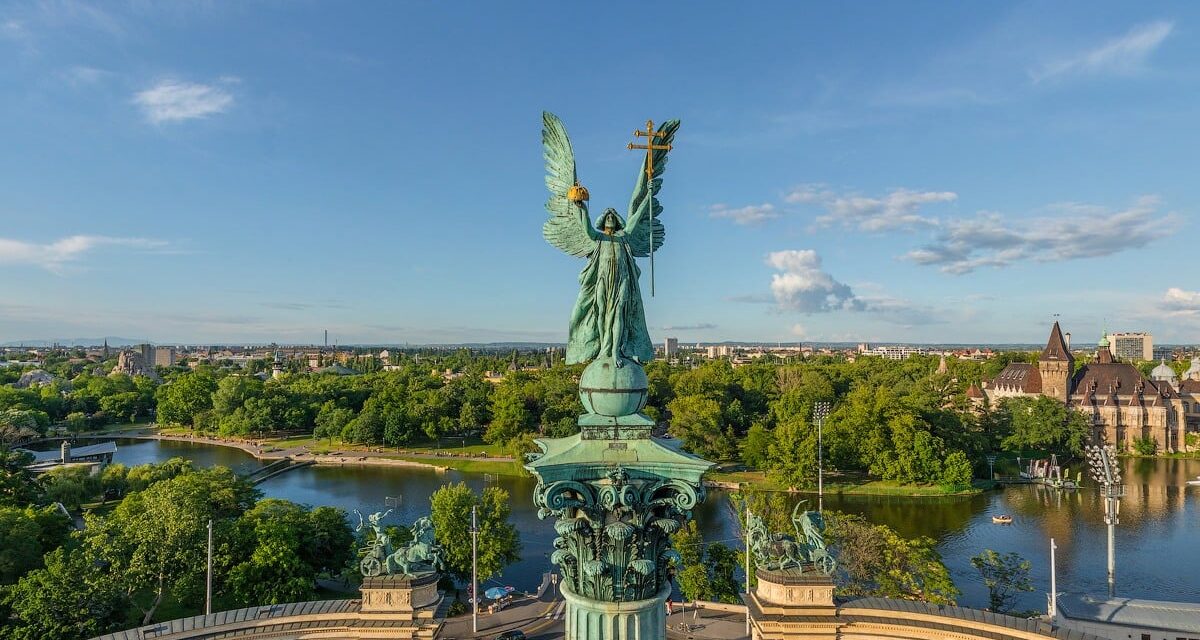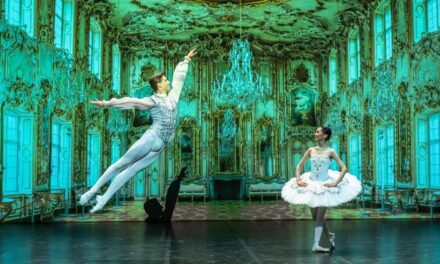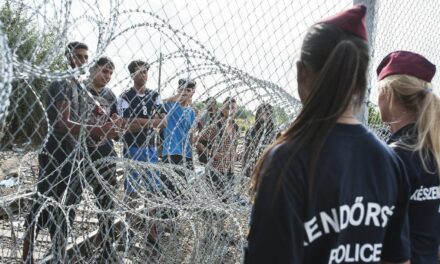For the first time in more than 120 years, the Archangel Gabriel standing on the Corinthian column of the monumental Millennium Monument on Hősök Square will be completely removed and restored. The works are expected to start on July 22.
The condition of the approximately 5-meter-high bronze statue has drastically deteriorated in recent decades, during previous renovations only aesthetic interventions were carried out on it, therefore its complete renovation has become inevitable
- says the National Heritage Institute in its statement sent to MTI on Thursday.
In the first phase of the works, a scaffolding system will be built around the 36-meter-high column, implemented by the asset manager Városliget Zrt. This makes it possible to lift the statue and transport it to a restorer's workshop, where, depending on the assessment of the situation following the discovery of the internal condition
They will restore their original condition in 6-12 months.
The restoration will be carried out by the restoration company that won the public procurement announced on the basis of the survey after the removal, on behalf of the National Heritage Institute. The renewed statue of Archangel Gabriel is expected to return to Hősök Square in the first half of 2025. During the works, not only the bronze statue, but also the head of the column holding the Archangel Gabriel will be strengthened.
The monumental Millennium Monument on Hősök Square and the Archangel Gabriel standing on a 36-meter Corinthian column in its center are one of the emblematic symbols of Hungary and a permanent destination for domestic and foreign tourists.
The Archangel created by the sculptor György Zala was inaugurated on October 24, 1901. On the occasion of the Millecentenary, the first phase of the renovation of the monument took place between 1995 and 1996, the purpose of which was the reconstruction of the Seven Leaders sculpture group and the Gabriel statue, however, due to lack of time and resources, the restoration of the Archangel statue took place only on site, its structure was left intact, only surface repairs were made they are done The second phase of the restoration of the Millennium Monument did not affect the Gabriel statue, the announcement states.
It is recalled that in 2021, before the International Eucharistic Congress, the Archangel statue was cleaned and re-patinated, at which time the National Heritage Institute (NÖRI) became aware that there were serious damages on the statue that necessitated the preparation of a new, much more comprehensive restoration than before . The fixings of the bronze ornaments of the main bronze figure and the Corinthian chapter below are in critical condition, their removal and comprehensive restoration in the workshop is inevitable.
The state of the statue was assessed in detail in December 2023, based on which a restoration plan was drawn up to restore it to its original condition.
Scaffolding will be built around the column during the works coordinated by Városliget Zrt., expected to begin on July 22, after which the artefact will be documented with 3D scanning, with metrological accuracy. This gives an opportunity to assess the acceptance status in a more detailed and modern way than ever before. With this step, the changes that have taken place on the statue can be checked and compared.
After the survey, the sculpture composition is divided into several pieces and lifted down with a heavy-duty crane: the figure of the Archangel Gabriel is brought down together with the upper half of the sphere, the Holy Crown and the double cross are detached from the statue's hands on the spot. After that, the Corinthian pedestal is lifted. The sculptural elements are transported to the location of the detailed survey by road with a special semi-trailer tractor.
In the announcement, they also write about interesting things related to the composition of the sculpture. It is emphasized that the minimum 0.5-1 ton mass of the concrete core of the bronze sphere acts as a counterweight against the wind pressure acting on the wings. The sculpture consists of bronze castings with a wall thickness of 3-6 millimeters, and due to the wind load and the size of the wings, it is stabilized inside by an iron structure. During the works, the primary consideration is the protection of plastically valuable parts, such as the inscription "GYÖRGY ZALA 1897", as well as the integrity of the figural part.
It is highlighted: the Corinthian chapter is made up of about a hundred separate elements. Since the elements of the chapter are the same for each location, and are also mirror-symmetrical, the highlighted pieces must be assigned a unique identifier during dismantling, and then a consignment map must be prepared based on the numbering. All elements must be marked with engraving in an inconspicuous place before disassembly, so that similar elements can be avoided.
MTI
Cover photo: VIVA Travel Facebook













